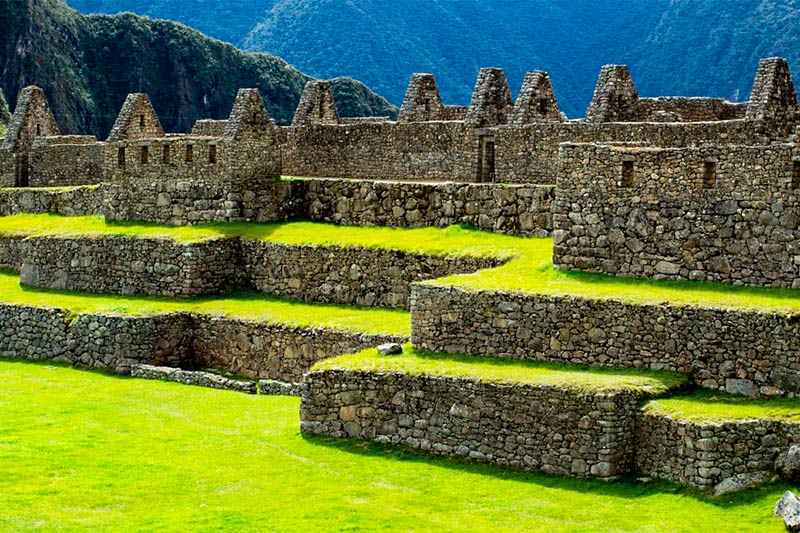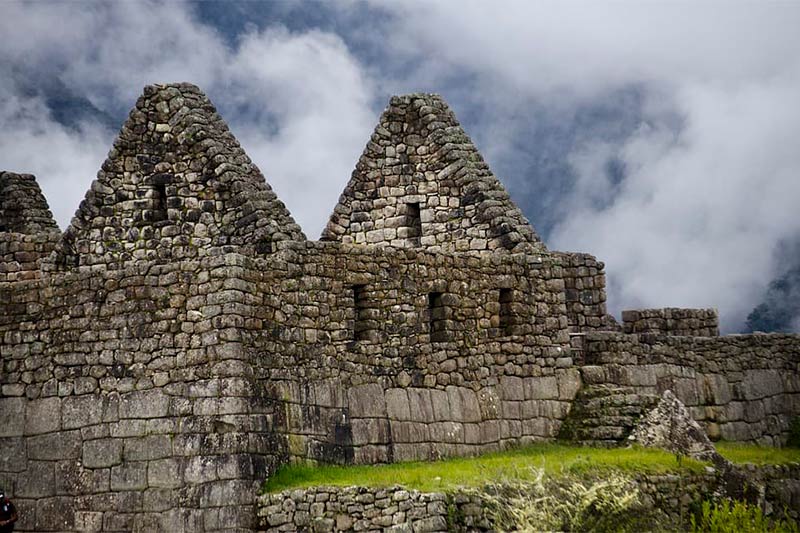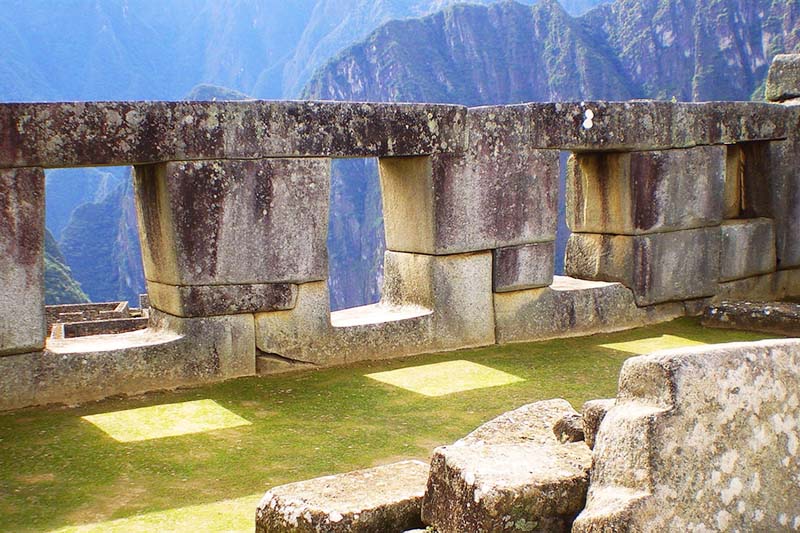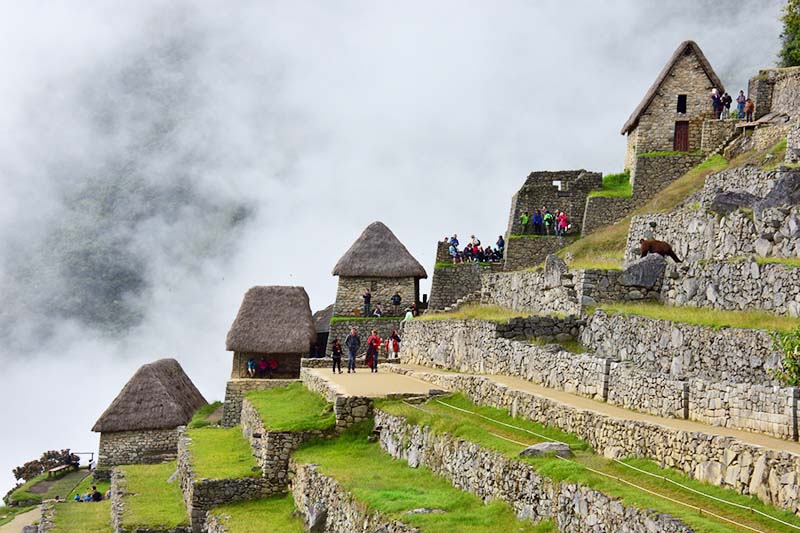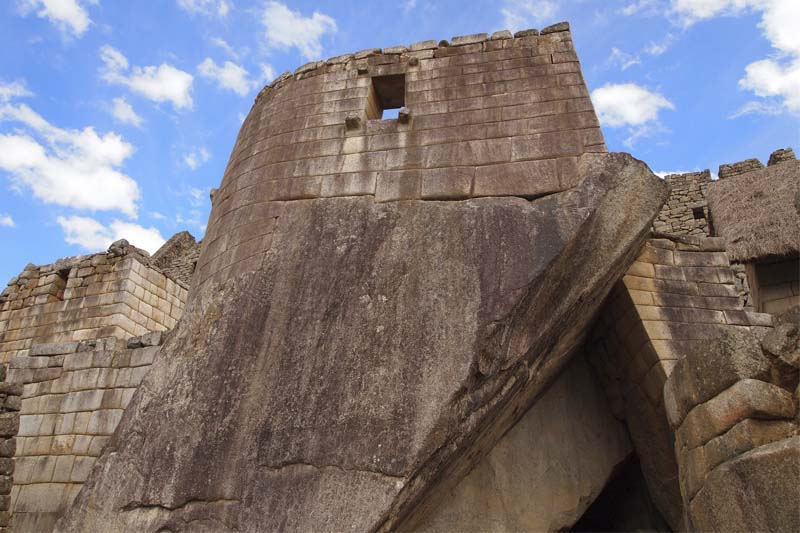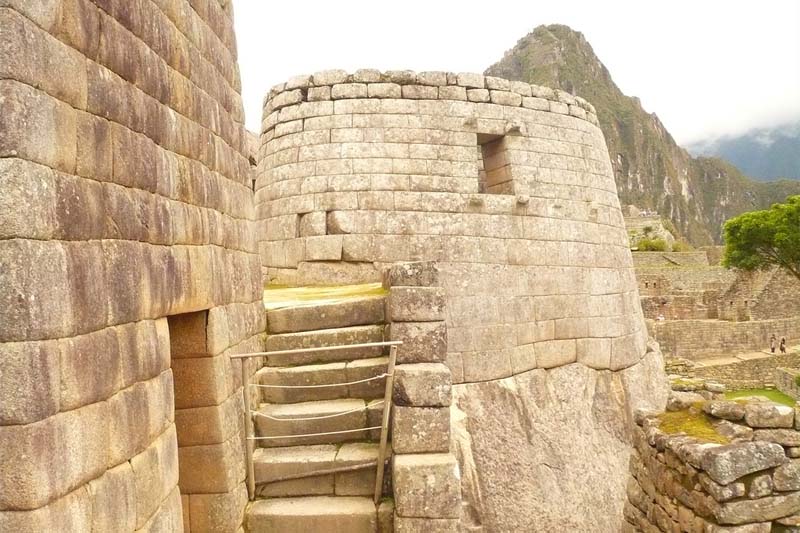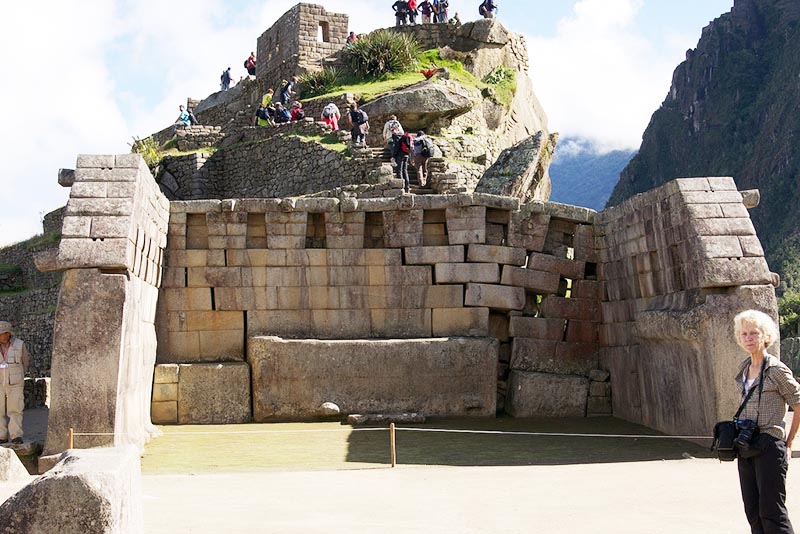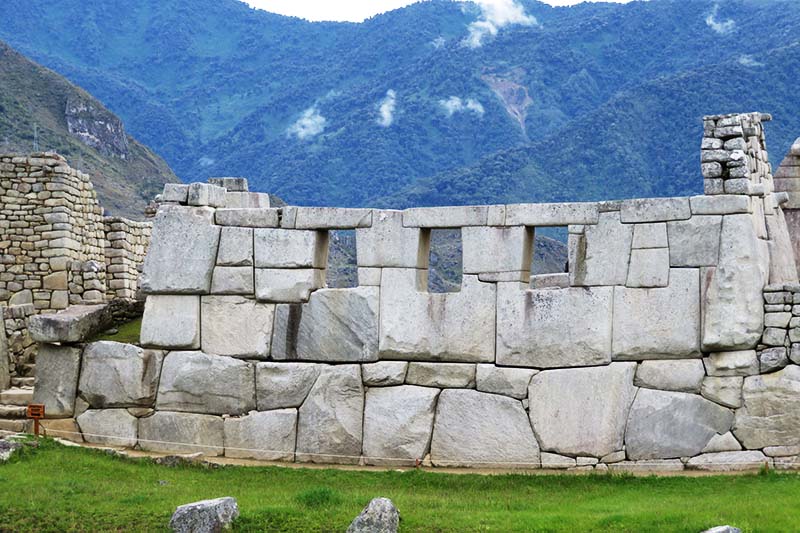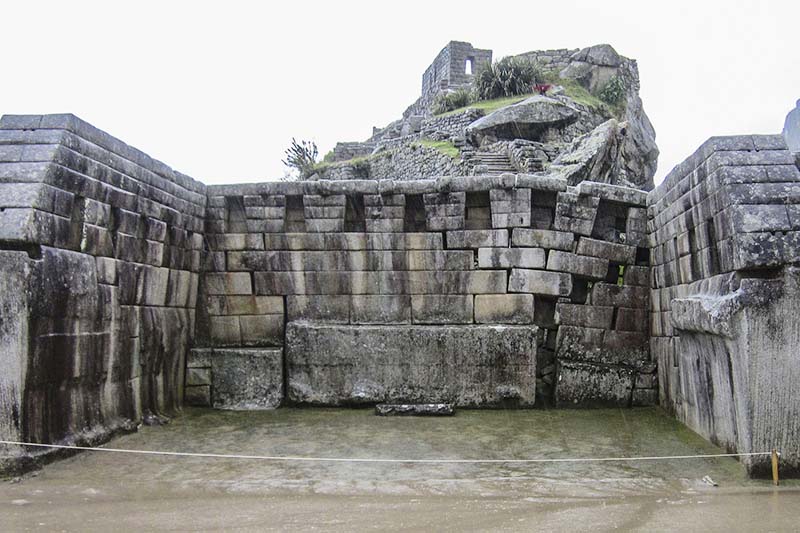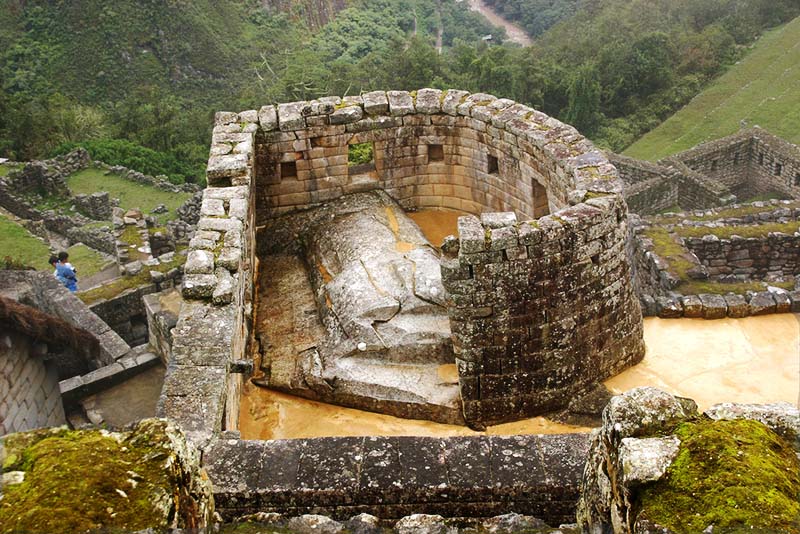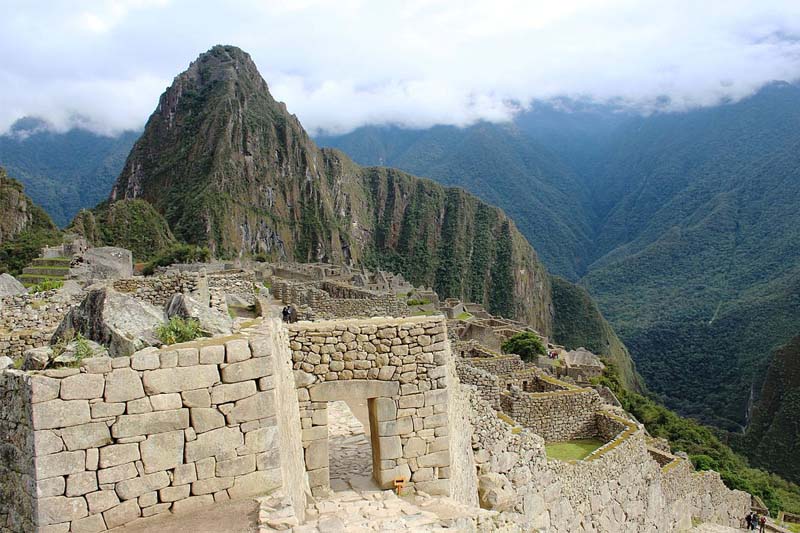Architecture of Machu Picchu
Machu Picchu sits in an impressive geographical area full of mountains. One of its characteristics is its beautiful and solid architecture that has kept it in good condition after more than 600 years. Its walls have an anti-seismic inclination that better resist telluric movements. Its windows and niches are polished to amazing perfection. The entire architectural complex harmonizes with the landscape. Currently, the Inca city is recognized as one of the 7 wonders of the modern world.
- The construction of Machu Picchu
- So was the planning
- How was the stone worked?
- Types of Inca architecture
- Types of walls in Machu Picchu
- What other materials did they use?
- The roofs
- Covers and windows
- The walls
- The platforms
- Photos: details of Machu Picchu
- Conservation of Machu Picchu
- Questions and answers about the architecture of Machu Picchu
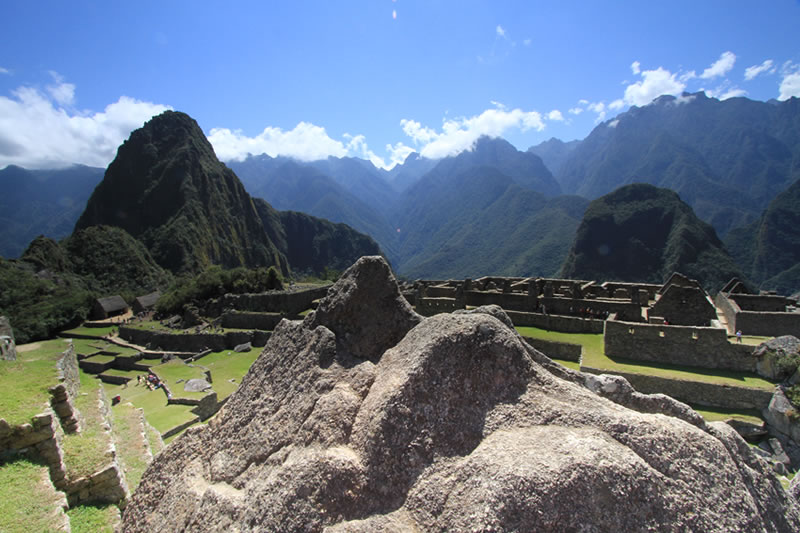
Models in Machu Picchu, sketches in smaller dimensions
The construction of Machu Picchu
- Machu Picchu was built in the midst of the Inca expansion, under the command of Emperor Pachacutec in 1450, approximately.
- For the execution of such a majestic work, the work of thousands of men from the peoples recently conquered by the empire, who were called ‘mitimaes’, was needed.
- The construction of Machu Picchu obeys a dominating and commercial desire with the peoples of the jungle region.
- As well as the Inca city, in the eastern region of the empire, the Incas built other citadels and temples such as: Choquequirao, Vilcabamba, Vitcos and more.
So was the planning
- The place was chosen for its scenic beauty, the strategic commercial point, the high location for proper surveillance but, it should be noted, for the presence of a large stone bench ideal for the construction of walls, enclosures and terraces. Even today it is possible to appreciate the stones that were used for the construction of the Inca city.
- Before starting any building, the Incas made sketches, plans, scale models and models using measurement systems, such as: arms, elbows, feet, steps, spans, etc.
- Machupicchu was planned to house between 300 and 1000 people. To supply themselves, they built a large chain of platforms as well as paths that connected them with other important sites and more groups of platforms. Today, a part of this route is known as the famous ‘Inca Trail’.
How was the stone worked?
- Even today there is no precise idea of how the Incas made the carved stones fit into Machu Picchu and the rest of the empire’s constructions with such perfection, without any type of glue.
- It is presumed that the Incas carried out a slow but efficient work in Machu Picchu carving stones using other more resistant and sharp stones of different sizes.
- Most of the stones used by the Incas have a double notch in the lower part of their faces. These served to make moving and lifting easier during the construction of the immense walls.
Types of Inca architecture
- The Kancha – Rectangular fence where other rectangular structures were located around the complex that resembled a patio or square. It was the unit of composition in Inca architecture. In addition to serving as a reference point for a citadel or palace, it served to form the blocks and blocks where the houses and temples were located.
- The Kallanka – This rectangular structure was larger than the ‘kancha’ as it was 70 meters long. They were associated with important temples or venues where religious or administrative ceremonies were held. Its roof had a gabled drop.
- The Ushnu – Rectangular staggered structures in the form of a pyramid whose upper part was reached through central stairs. The ‘Ushnus’ were present in most citadels and important venues because there the Inca presided over religious or administrative ceremonies.
- The Tambo – Simple buildings made with rustic stones where walkers or ‘chasquis’ stayed while they traveled the thousands of kilometers that made up the royal roads (qhapac ñan). They were related to the ‘colcas’ or warehouses that supplied food to travelers.
Types of walls in Machu Picchu
- The rustic or ‘pirka’ – Wall worked with rough stones, carved and arranged in a rudimentary way.
- Cellular type – Wall similar in appearance to the structure of a honeycomb. It is made with small polygonal limestone. You can see these structures in a few structures of the Inca city as well as in Chinchero.
- Improved type – Walls worked with igneous stones made of high quality. The best examples of this type of building are: the temple of the 3 windows of Machupicchu, the main temple of Ollantaytambo and the wall of Hatun Rumiyoc in Cusco.
- Sedimentary or imperial type – Walls made with medium stones positioned horizontally in rows, which gives the impression of being totally rectangular. Its assembly is so perfect that it is impossible to introduce a razor blade or a sheet of paper in its structure.
- Cyclopean type – These walls are also known as megalithic style. It is characterized by its huge boulders, many of which reach 8 meters in height. Some examples can be appreciated in Sacsayhuaman.
What other materials did they use?
- In addition to stone, the Incas used adobe. This material is made of mud mixed with icchu (Andean straw). It is assembled in rectangular blocks, after being dried in the sun. Many Inca buildings, even entire cities, were worked with this material. For example: the Pachacamac sanctuary (in the south of Lima), Raqchi (in the south of Cusco), among others. Currently, adobe is still widely used in Andean towns.
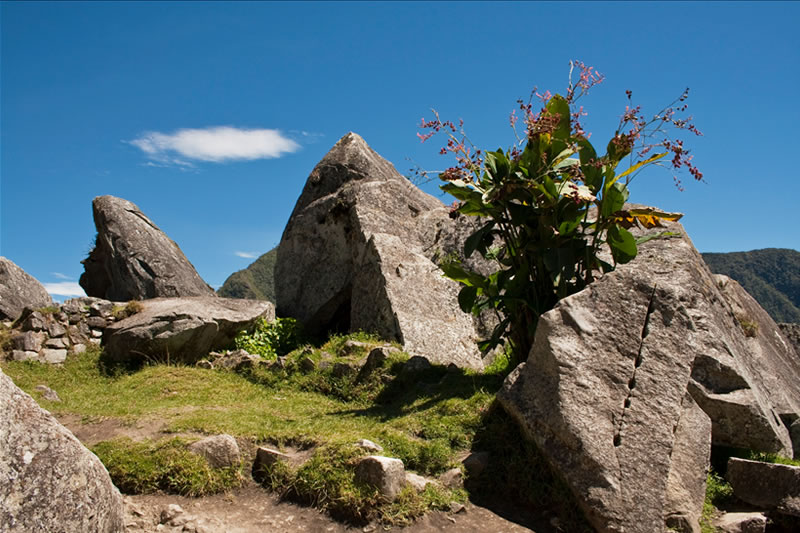
Quarry in Machu Picchu, place where the stones were worked
The roofs
- The roofs of Machu Picchu and other Inca buildings were made with wooden beams and were covered with icchu. According to their shape, the Inca roofs were classified as: a) one-sloped, b) two-sloped, c) four-sloped and d) conical roofs.
- One of the most impressive buildings is the so-called ‘Temple of Wiracocha’ located in the archaeological site of Raqchi. This ‘kallanka’ reaches 92 x 25 meters. Consequently, its ceiling was one of the highest and most imposing in the empire.
- Due to the amount of rain during the year, the Inca roofs had an inclination of 50º to 65º. The icchu wore out and had to be replaced every three or four years.
Covers and windows
- Like most buildings in Machu Picchu and the rest of the empire, the doors and windows had a trapezoidal shape. The covers were made of double jamb, which allowed a closing and opening system from the inside. The windows had wooden or stone lintels.
- Likewise, it is worth mentioning the existence of niches in the walls of almost all the enclosures of Machu Picchu. The niches were used to place objects of daily utility as well as important decorations. As well as the covers and windows, the niches had a trapezoidal shape.
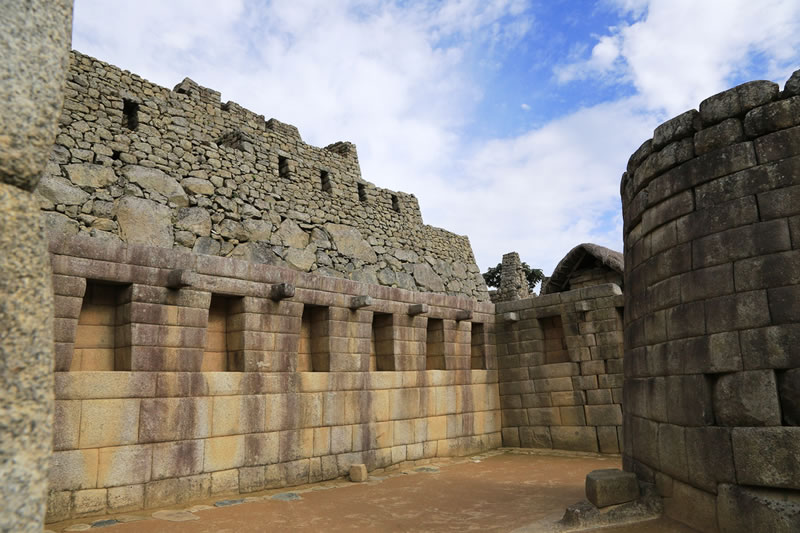
Types of walls in Machu Picchu
The walls
- Most Inca walls are slightly inclined. Likewise, it is often seen that the Inca walls are wider at the base compared to the top. For this reason, it is concluded that the most used form of Inca architecture is the trapezoidal, which provides stability and a sense of balance. Its main function was to better withstand telluric movements. Due to this, Machu Picchu has withstood strong earthquakes throughout its more than 500 years of history.
The platforms
- The platforms are a set of agricultural terraces located one on top of the other, which made it possible to adapt the difficult mountainous geography for proper agricultural work. The platforms make up most of the architectural structures of Machu Picchu. Inside its walls there are several layers of materials that facilitated the absorption and drainage of water, such as: rocks, clay, gravel, etc. The platforms of the Inca city also had the function of retaining walls.
Photos: details of Machu Picchu
Conservation of Machu Picchu
- The Inca city is part of a much larger area called the Historic Sanctuary of Machu Picchu, which covers an area of more than 35 thousand hectares. There, in addition to the archaeological site, you can see the sections of Inca roads, the valuable natural flora and fauna as well as other Inca citadels.
- Machu Picchu receives 1.5 million visitors each year, which can threaten the entire historical and natural environment of the Inca city. To better protect its architecture and natural beauty, a plan for the protection and conservation of the wonder of the world is sought.
- Thus, in 2008, UNESCO did not include Machupicchu on the list of endangered heritage.This thanks to the plan designed by its authorities as well as the correct behavior of its visitors.
- To protect and preserve the wonder of the world, it is recommended not to damage the Inca buildings.
Questions and answers about the architecture of Machu Picchu
1) What function did Machu Picchu have?
Machu Picchu was an Inca citadel with ceremonial and productive functions. It also served as a center of Inca domain on the edge of the jungle. Emperor Pachacutec used to visit it as a resting place with his family.
2) What is Machu Picchu made of?
Machu Picchu is made of granite stone abundant in the area.
3) How long did the construction of Machu Picchu take?
The construction of Machu Picchu took almost a hundred years. However, according to various studies, the Inca city was left unfinished at the time of its abandonment in approximately 1535.
4) Which Inca ordered the construction of Machu Picchu?
Emperor Pachacutec ordered the construction of Machu Picchu in 1450 A.D., according to carbon fourteen tests.
5) What is the most surprising construction of Machu Picchu?
In Machu Picchu the Incas built several amazing constructions. They stand out: the Temple of the Sun, the Temple of the 3 Windows, the Intihuatana and the Intipunku.
6) Where did they get the stones to build Machu Picchu?
In the same Inca city of Machu Picchu there is an area where stones abound. This stone bank was used for the construction of the enclosures, paths, platforms, squares and temples of Machupicchu.
7) When was Machu Picchu built?
Carbon Fourteen evidence supports that Machu Picchu was built in 1450 AD.
8) What is the architecture of Machu Picchu like?
The Incas carried out slow but efficient work in Machu Picchu carving stones using other more resistant and sharp stones of different sizes.
9) How many people worked on the construction of Machu Picchu?
For this, they needed more than a thousand men from different regions under the mitimaes system (transfer of newly conquered settlers to adapt to the Inca work system).
10) Could the architecture of Machu Picchu disappear?
Machu Picchu has a solid architecture that has helped it better resist the passage of time and telluric movements. However, due to the proliferation of tourism, if adequate measures are not taken, the Inca city may disappear in the future.
By Ticket Machu Picchu – Last updated, August 15, 2024
